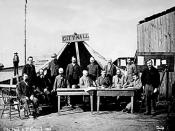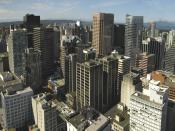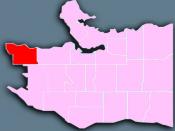Case Study of Urban Structures:
Vancouver, B.C.
******
IB Geography Year 1
Mr. ******
October 29 2008�
Vancouver is a major coastal city in the Pacific Northwest region and is the largest city in the province of British Columbia. Located on a peninsula, Vancouver is an ethnically diverse city, home to over 600,000 people, 52% of which have a first language other than English. The city of Vancouver is divided into 23 districts and is a major hub for immigration.
Burgess' Concentric Model, 1924
Burgess' Concentric Model does not fit the city of Vancouver very well because Vancouver is not a concentric city and does not fulfill many of the Burgess' initial assumptions. According the Burgess' model, cities expand outwards concentrically in social-economic groupings, much like the shape of waves water when an object strikes the surface of the water. Because Burgess' based his model on the city of Chicago in 1924, he assumed that the city lay on flat land and that the transportation system was of equal significance to everyone in every direction.
This however, does not accurately reflect Vancouver's geographical or socio-economic groupings. In my map of Vancouver, there is no evidence of any concentric activity in terms of residential groupings: the wealthy tend to live on the west, the middle class tends to reside on the south and southeast, and the lower class tends to live directly east of downtown. The transportation system does not provide equal access to all, nor does the city sit on flat land. Vancouver is a city of ethnic diversity because it not only hosts a variety of different cultural and ethnic backgrounds but also spreads these ethnic backgrounds evenly and distinct ethnic communities are less common. Although places like Little Italy, Chinatown, Japantown, and Greektown were historically distinct regions, they...


